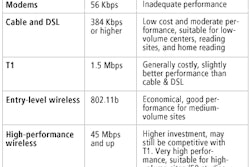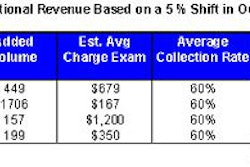Adopting PACS can lead to an increase in reported incidental findings and recommended follow-up studies for lumbar spinal MR imaging, according to research published in Radiology Online.
To evaluate this potential effect, Dr. Steven Wagner and colleagues from Thomas Jefferson University Hospital in Philadelphia retrospectively reviewed 2,500 reports of lumbar spinal MR examinations from 1995 to 2000. The study included data from one year before the hospital’s introduction of PACS, a transitional year from hard copy to PACS, and three consecutive years after PACS.
The team defined an incidental finding as anything other than disease related to the vertebrae, intervertebral discs, neural structures, spinal canal, and paraspinal soft tissues. When incidental findings were noted, one researcher reviewed the full reports of all subsequent imaging and recorded the modality and result of each study. Clinical follow-up results, when available, were also obtained from inpatient and outpatient chart reviews and the hospital's clinical information system, according to the researchers.
In a total of 2,500 reports (including 1,512 female and 988 male patients), 202 incidental findings were found in 183 patients. Incidental findings climbed from 19 of 500 (3.8%) before PACS to 31 (6.2%) in the PACS transition year. In the three years after PACS, incidental findings were found in 53 (10.6%), 49 (9.8%), and 50 (10%) cases.
"Therefore, there was a 163% increase in the number of incidental findings by comparing the pre-PACS year to post-PACS year 3, and a maximum increase of 179%, as compared with the post-PACS year 1," the authors wrote (Radiology Online, September 19, 2002).
In the 183 patients with incidental findings, 83 had clinical charts available for review. Four patients had occult malignancies and one had occult metastatic disease. One case was found in the transitional PACS year, with three found in the second year of PACS usage and one in the third year.
The number of follow-up studies grew an average of 340% after PACS, with ultrasound studies experiencing the biggest increase in utilization. Two ultrasound exams were ordered in the year before PACS, 11 in the transitional year, and 27, 17, and 14 performed in the three years, respectively, after PACS.
The group then turned to the 2000 Medicare reimbursement schedule to estimate the costs associated with the additional studies. Expected Medicare reimbursement for follow-up exams generated by the incidental findings grew an average of 146% after PACS.
In the year prior to PACS, the researchers calculated reimbursement of $4,221 per 1,000 studies, compared to $9,307, $13,425, $10,558, and $8,252 in the transitional year and three years after PACS, respectively, the group reported.
The 202 incidental findings led to $22,882 total Medicare reimbursement for follow-up studies. The four cases of occult malignancy were discovered at a cost of $5,721 per diagnosis.
"In summary, the introduction of PACS into radiology practice for lumbar spinal MR imaging appears to be associated with an increased number of incidental findings reported and follow-up studies recommended," the authors wrote. "The immediate effect may be increased expense to the healthcare system because of additional examinations, although clinically important occult disease may be identified."
By Erik L. RidleyAuntMinnie.com staff writer
October 15, 2002
Related Reading
Clinical IS audits tune performance, productivity, October 3, 2002
Primary care reminders reduce x-ray requests, September 27, 2002
Less-cluttered MRI PACS descriptors provide clarity for referring physicians, September 12, 2002
Oversight committee, project management smoothes PACS operation, September 10, 2002
Copyright © 2002 AuntMinnie.com




















